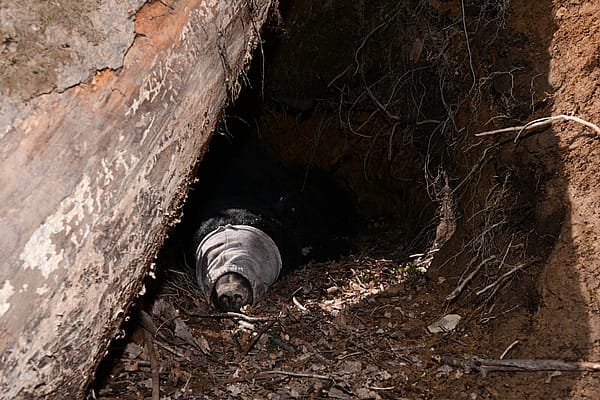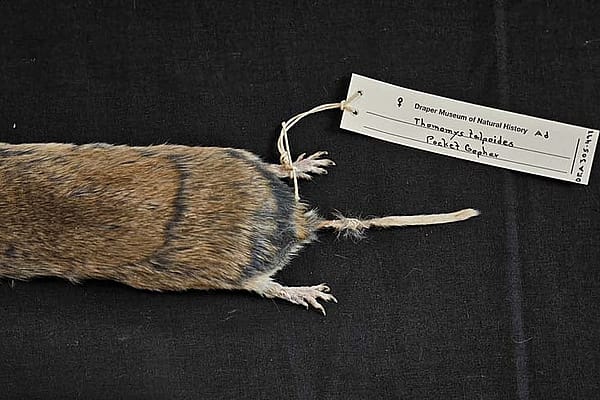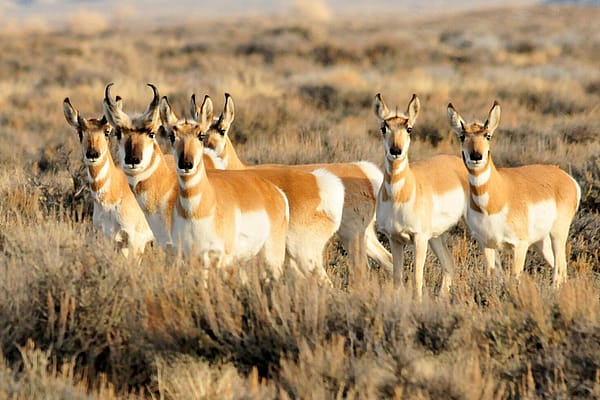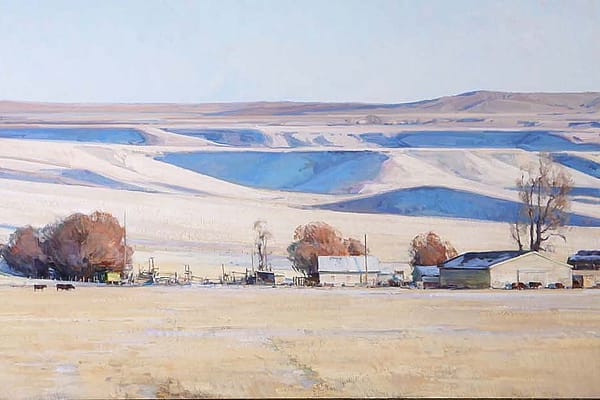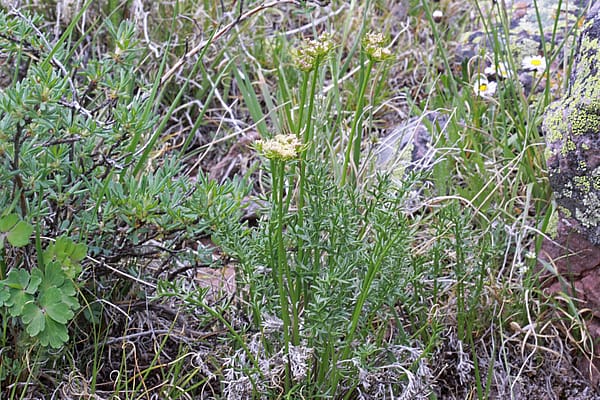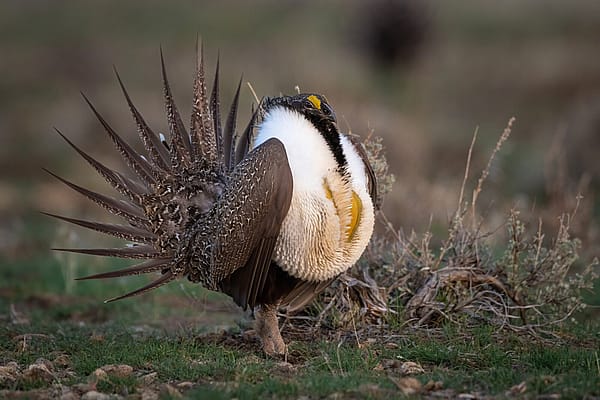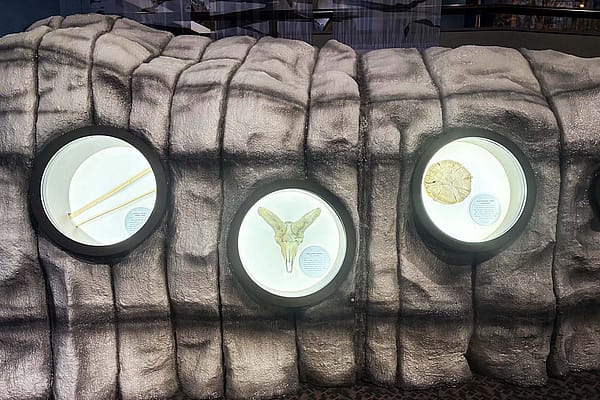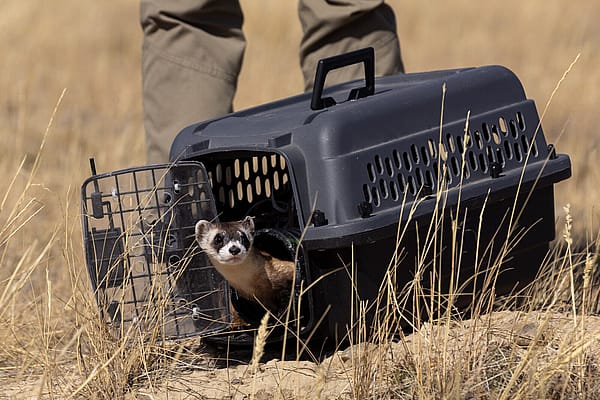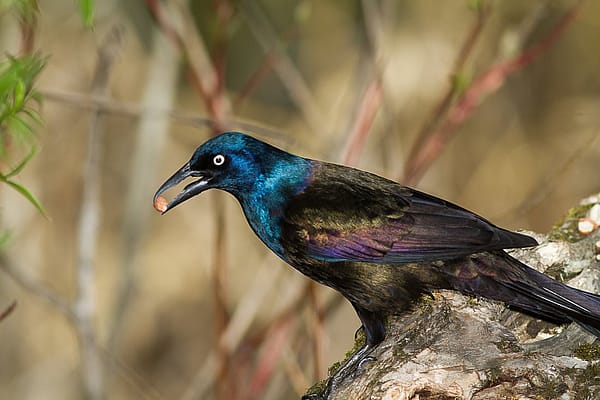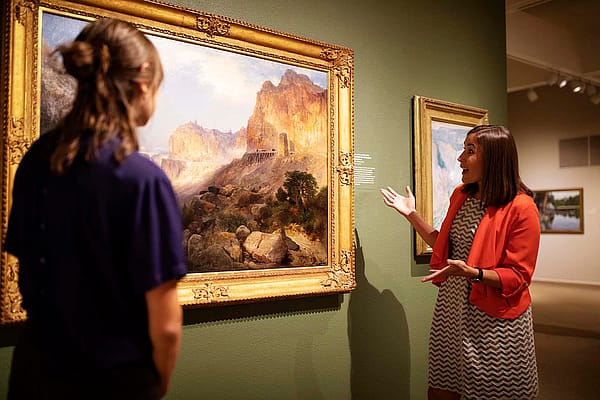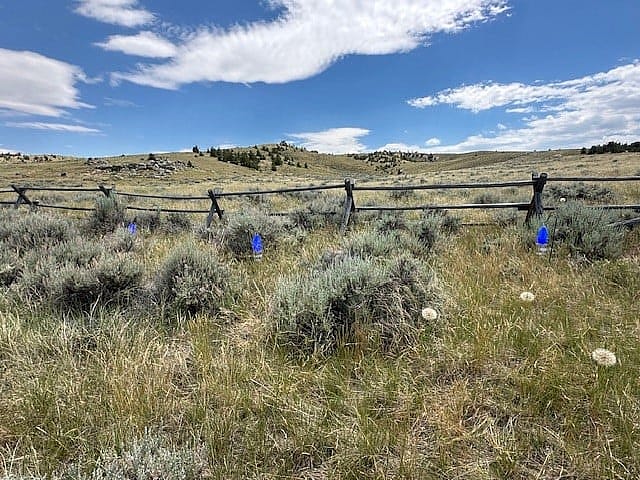
Wintering with Bees
As the wind, cold temperatures, and snow create icy conditions outside, our staff are working on the results of the second year of our pollinator census. This three-year project deploys blue vane traps throughout Park County to develop a baseline of bee species. So, despite the chilling winter conditions, our thoughts are not far from bees!

At the time of publishing this blog, many of these bees are overwintering in a phase called “diapause.” Like hibernation, this is a period of reduced metabolic activity in insects. This stage is not without costs, with recent research showing that mass, age, and nutrient acquisition can all affect the survival of diapausing bees.
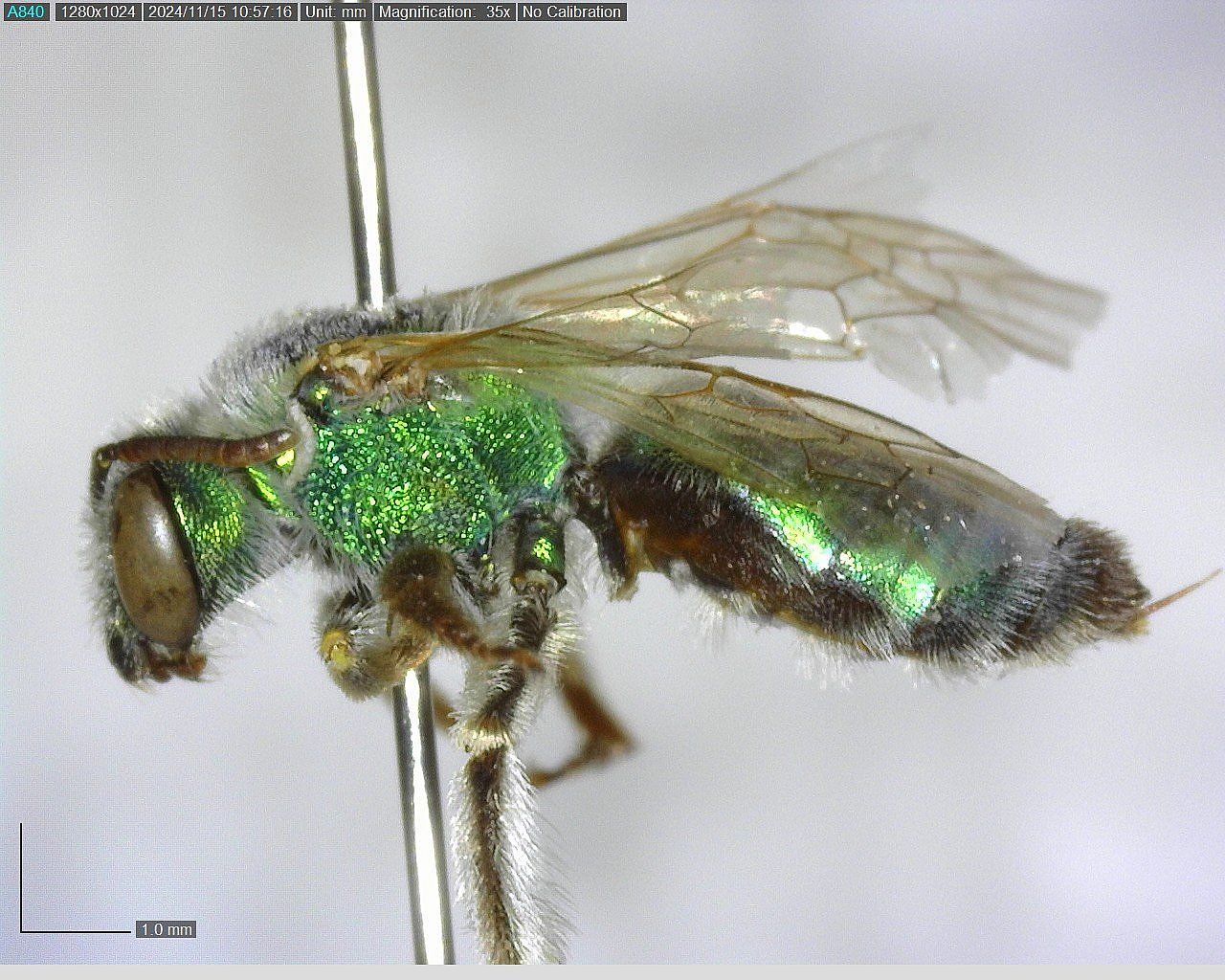
Where do they go?
With over 4,400 species in North America, not all bees spend the winter the same way. Mated females of the metallic green bee (Agapostemon) fill up on nectar in the fall before entering diapause. They then enter the underground nests where they were born. These metallic green bee nests are similar to apartment complex with one entrance but several apartments or nests within. Metallic green bees are part of over 70 percent of bee species that nest in the ground, but not all ground nests look alike. Some queen bumble bees follow the same cycle, spending their winter in rodent burrows or other abandoned cavities. Others nest in leaf litter. For both metallic green bees and bumble bees, only the mated females enter diapause as males die off during the fall.
Non-ground nesting bees spend the winter within twigs, leaves, and rocks. In these cozy winter abodes, the bees take different forms. Adult Mason bees create cocoons to spend the winter in while leafcutter bees spend the winter as larvae.
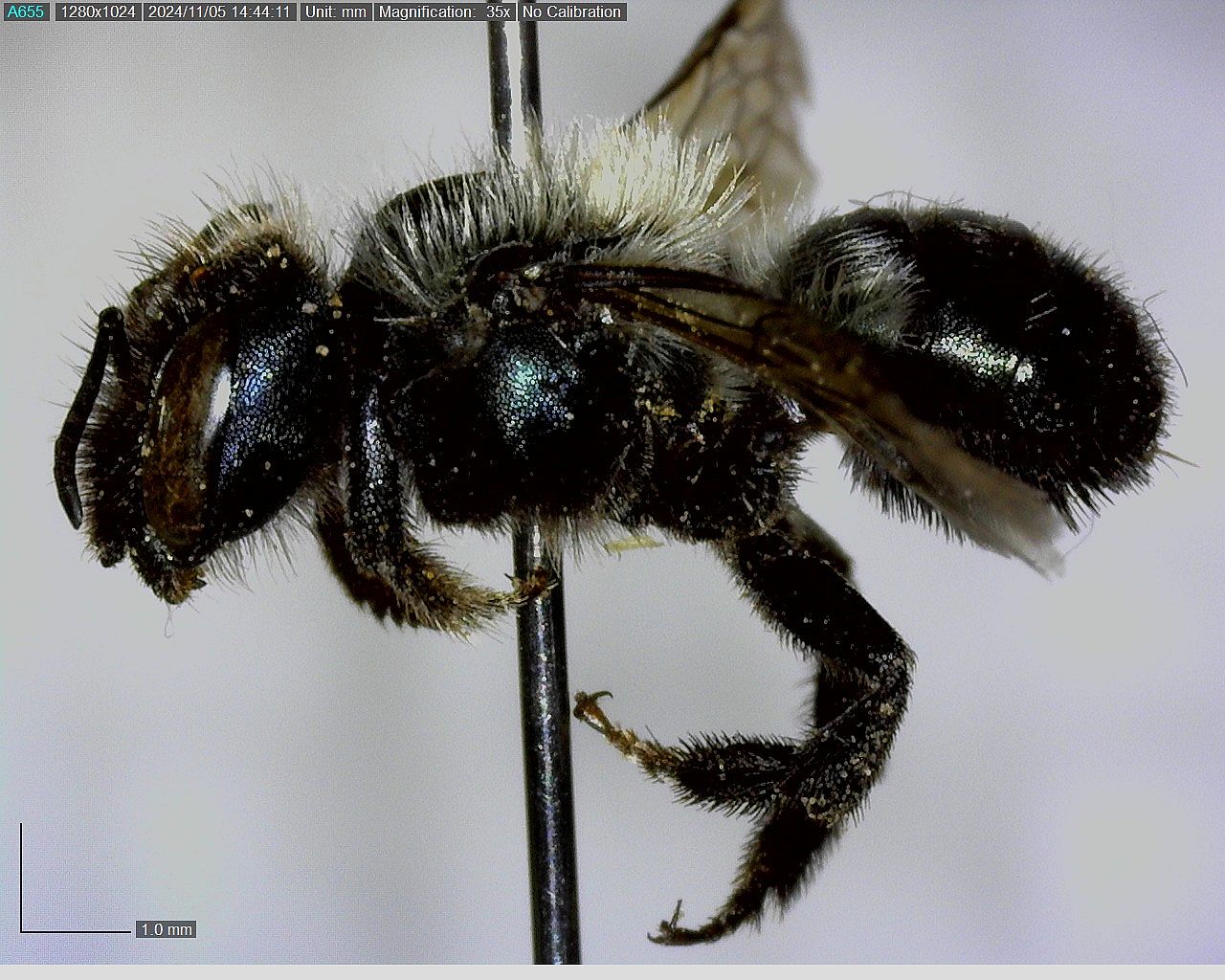
Dangers of Overwintering
The survival of many bee species depends on the overwintering queens and their successful emergence from diapause, which is triggered by temperature and day length. Unfortunately, risks to hibernating bees are many—from soil disturbance to the removal of brush piles, dead wood, leaf stems, and leaf litter. Each of these results in a loss of potential overwintering habitat. There are also other, less obvious threats. For example, a study published in December 2024, showed queen bumble bees preferentially chose pesticide-sprayed soil when selecting a site for diapause. These queens may not emerge from hibernation as pesticides pose risks to bees. To help overwintering bees, keep a “messy” lawn with plenty of winter habitat such as leaves and twigs, and limit the use of pesticides.
References
Philogéne, Bernard J.R.
2008 Diapause. Encyclopedia of Entomology edited by John L. Capinera. Springer Dordrecht: 1206–1210. doi:10.1007/978-1-4020-6359-6_904
Markovits, Chloe, and Nicholas Dorian
2021 Agapostemon virescens: this green metallic sweat bee loves your garden. Tufts Pollinator Initiative. Electronic document, https://sites.tufts.edu/pollinators/2021/08/agapostemon-virescens-this-green-metallic-sweat-bee-loves-your-garden/, Accessed January 8, 2025.
Master Gardner Foundation of Washington State
2024 Bee Prepared: Overwintering Solitary Bees Made Simple. On Evergreen Thumb, podcast. https://evergreenthumb.mastergardenerfoundation.org/episode033/
Morris, Sara
2018 Where do pollinators go in the winter? Xerces Society Blog. Electronic document, https://xerces.org/blog/where-do-pollinators-go-in-winter, Accessed January 8, 2025.
PennState
2024 The Bumble Bee Lifestyle. Electronic document, https://extension.psu.edu/the-bumble-bee-lifestyle, Accessed January 9, 2025.
2021 Winter survival guide for queen bumble bees. Electronic document, https://ento.psu.edu/news/winter-survival-guide-for-queen-bumble-bees, Accessed January 8, 2025.
Rondeau, Sabrina, and Nigel E. Raine
2024 Bumblebee (Bombus impatiens) queens prefer pesticide-contaminated soils when selecting underground hibernation sites. Science of The Total Environment 954: https://doi.org/10.1016/j.scitotenv.2024.176534
Sgolastra, Fabio, Xavier Arnan, Theresa L. Pitts-Singer, Stefano Maini, William Kemp, and Jordi Bosch
2015 Pre-wintering conditions and post-winter performance in a solitary bee: Does diapause impose an energetic cost on reproductive success? Ecological Entomology 41(2). DOI: 10.1111/een.12292
United States Forest Service
n.d. Bee Pollination. Electronic document, https://www.fs.usda.gov/wildflowers/pollinators/animals/bees.shtml#:~:text=North%20America%20has%20over%204.400,from%20the%20Pollinator%20Partnership%20website%E2%80%A6, Accessed January 8, 2025.
Written By
Amy Phillips
Amy Phillips brings seven years of experience in the cultural heritage field to her position as Curatorial Assistant at the Center of the West's Draper Natural History Museum. She is the co-Principal Investigator on the “Bison of the Bighorn Basin” Project, which employs faunal analysis to learn about past bison ecology in the geographic Bighorn Basin using more than 100 bison crania sourced by community engagement. Amy also serves on the Society of American Archaeology Public Outreach Committee and as an appointed member of the Park County Historic Preservation Commission. She has research interests in the relationship between humans and their environments in the past and present, taphonomy, and bison ecology. Amy is currently pursuing her Master of Science in Cultural Resource Management, Archaeology from St. Cloud State University.
